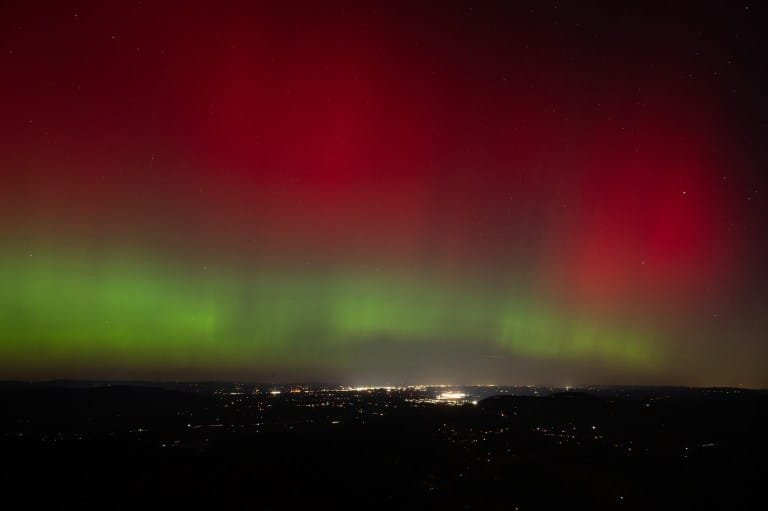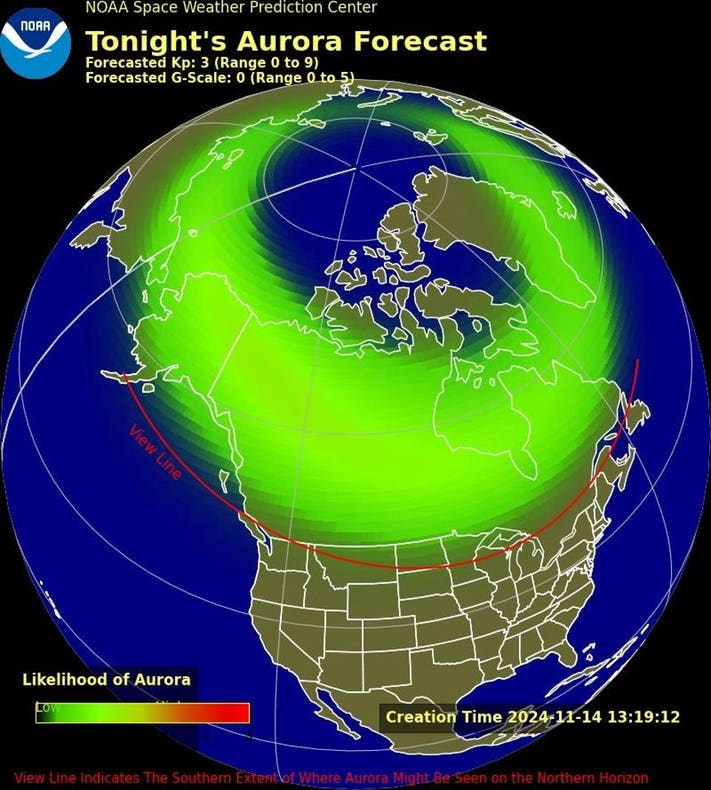
Northern Lights Forecast: Map Shows Aurora Borealis Set To Dazzle Us Again Tonight Likely To Get Further Below The Canadian Border
Auroral activity might become visible to a portion of the northern U.S. on Thursday night, as geomagnetic storm conditions will likely be calm through Saturday, according to a National Oceanic and Atmospheric Administration forecast.
NOAA forecast a Kp index of three on a scale of nine for Thursday, meaning the northern lights will be seen further south from the North Pole and be “quite pleasing to look at” for those in the right area.

Auroral activity will likely remain calm on Friday and Saturday, according to the NOAA, which forecast a maximum Kp index of three for either day, respectively.
No geomagnetic storm conditions, resulting in auroral borealis moving further south, are expected, though NOAA said there is a “slight chance” for minor solar radiation that could result in some radio blackouts.
Where Will The Northern Lights Be Visible?
There is a low chance to see the northern lights throughout northern Canada and Alaska, with a view line—marking a minimal chance to see the phenomenon—dipping just below the Canadian border. Parts of northern Montana, North Dakota and Minnesota will have a low likelihood of viewing aurora borealis, while areas in northern Washington, Idaho, South Dakota, Wisconsin and Michigan will have a lower chance. (See viewing line below.)

What’s The Best Way To See The Northern Lights?
Auroral activity is best seen between 10 p.m. and 2 a.m. local time while at a high vantage point away from light pollution, according to the NOAA.
What’s The Best Way To Photograph The Northern Lights?
A regular camera with the focus set to the farthest possible setting with a wide aperture, low shutter speed and high ISO value should be able to capture the northern lights, Adobe said. If using a smartphone, Iceland’s tourism website suggests switching on night mode with a low shutter speed.
Key Background
Both NASA and NOAA say activity on the sun’s surface has reached a “solar maximum,” resulting in more space weather events that pull the northern lights further south. A peak in activity is expected to continue into 2025 and early 2026. More celestial events are expected to appear in the night sky in the upcoming weeks, including the last supermoon—a full moon appearing about 30% brighter and 14% larger than average—of the year and the Leonids meteor shower.





